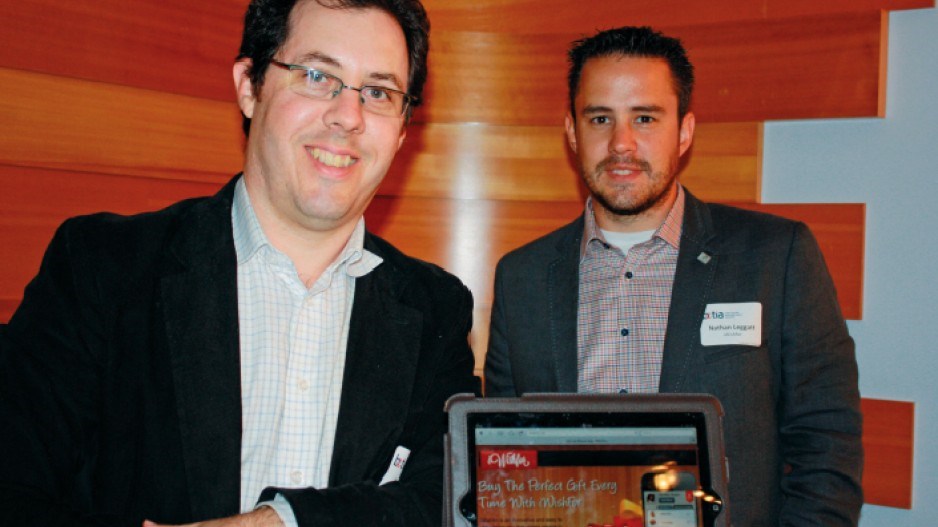As Facebook (Nasdaq:F) beta-tests a “Want” button, and Amazon (Nasdaq:AMZN) tries to whack Pinterest’s e- commerce piñata with PinPointing, an Abbotsford startup has launched a mobile app that is tailor-made for the exploding mobile e-marketing space.
The iwishfor app can be used to scan the barcodes of products to create digital wish lists for you, your friends and your family.
“We think of ourselves as the Pinterest of real-world wants,” said iwishfor co-founder Ian Hancock.
The app takes the guesswork out gift buying, both for other people buying for you and for you buying for friends and loved ones. It can also be used by retailers for direct marketing to consumers who want their products (see sidebar “How the iwishfor app works”).
Hancock came up with the idea when he got a “crappy” gift from a friend.
“I thought, there has to be a better way of sharing the things I want so I don’t get crappy gifts.”
He recruited Nathan Leggatt as CTO and launched the startup, which has been accepted into the Founder Institute accelerator program in Seattle. An iwishfor iPhone app has been available for a couple of months now, and Android and Windows phone apps are in the works.
Hancock and Leggatt make no money from the app because it’s free, but Hancock said they plan to make money from selling access to its database to retailers for consumer analytics and marketing.
“Because we’re getting a lot of really personal aggregated data, we can say to a merchant: ‘Come into our database, and you can find out how many people have that shirt on their list, by age, location and other demographics.’ Merchants and retailers can laser-pinpoint their marketing to people who have already expressed that they want these things.”
David Gray, a retail analyst, thinks that selling consumers on the app should be easy enough, because it’s free and useful.
“The core concept has a lot of appeal. It’s so risk-free, why wouldn’t I try this?”
But if not managed right when used for marketing, Gray warned that it could become “spammy” and turn users off.
If iwishfor users in an electronics store scan an iPad, for example, they might appreciate getting an alert telling them when it’s on sale, but might not appreciate getting solicitations for a cheaper tablet by some other maker.
“The challenge [Hancock and Leggatt] are going to face is the people throwing money at them may not be the ones who are so tightly aligned and relevant to the shopper,” Gray said. “There’s a real opportunity here for someone just to say, ‘I’m going to buy a list and I’ll spam them.’”




